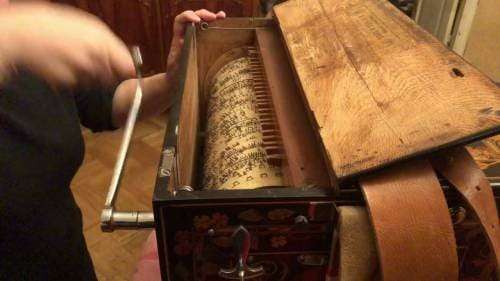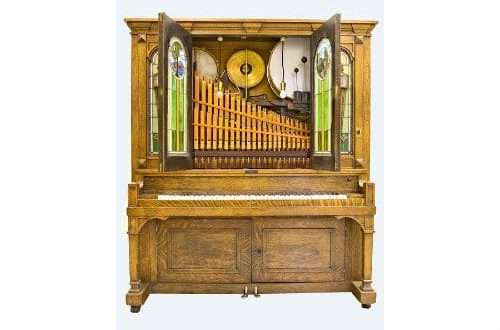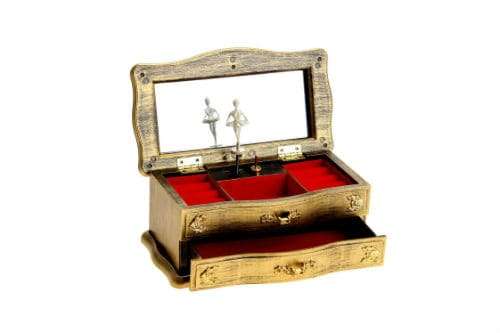
Music box: what is it, composition, how it works, history, types
Contents
A music box is a kind of mechanical musical instrument, which has long been not only a means of playing melodies, but also an interior decoration.
At the end of the XNUMXth – beginning of the XNUMXth century, such a trifle was available in all aristocratic families. Today, music boxes, although they have lost their former popularity, are a welcome gift, they personify magic, antiquity, a fairy tale.

The device and the principle of operation
The principle of operation of all models is the same: inside the acoustic box, steel plates are arranged in the desired sequence, differing in thickness – they form a scale. Turning the crank manually or winding the box with a key, the rotating part of the mechanism, equipped with pins, touches the plates, giving rise to enchanting sounds.
The device includes the following parts:
- Stand. A heavy metal base that performs the only function – holding all other mechanisms.
- Key. Operates the mechanism. Attached to mechanical models, manual ones are equipped with a handle instead of a key.
- Comb. The metal base located inside, having teeth of various sizes. The comb material is steel.
- Cylinder. The rotating mechanism, located in close proximity to the comb, is a kind of drum. The surface is equipped with pins arranged in such a way that, as they rotate, they touch certain teeth of the comb – that’s when the box starts to sound. The larger the diameter of the cylinder, the longer the melody.
- Spring mechanism. One or more of these mechanisms installed inside the structure allow you to repeat the melody many times. Depending on the size of the spring, the music will play for several minutes or several hours.
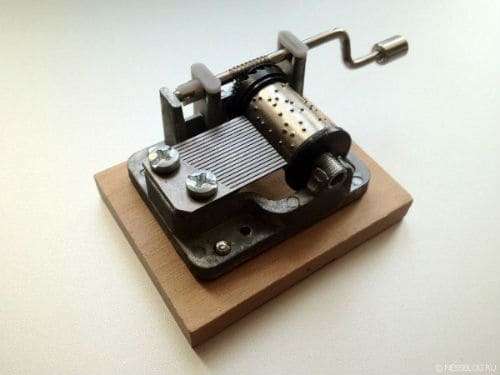
History of the music box
The first music boxes appeared in Europe at the beginning of the XNUMXth century. The birth of innovation is associated with the development of watch mechanisms: when the clock learned to play music, the masters came up with various gizmos that make pleasant sounds, including music boxes.
At first, outlandish souvenirs were incredibly expensive; only wealthy people belonging to the upper class decided to allow the purchase. At the beginning of the XNUMXth century, the Swiss opened the first factory: music boxes began to be produced in batches. Particularly successful were models equipped with moving figures dancing to the beat of the music.
Initially, the instrument was made of expensive wood species. The finished item was exquisitely decorated, trying to give an expensive look: ribbons, fabrics, stones, pearls, ivory. Such specimens looked spectacular, elegant, stylish. Then metal structures began to be considered fashionable.
At the end of the XNUMXth century, gramophones were invented: they reproduced, in addition to the melody, the voice of the singer. The popularity of music boxes instantly waned. Today they are bought as souvenirs. In Russia, the best manufacturers of modern caskets are called the firms “Russian Gifts”, “Rules of Success”.
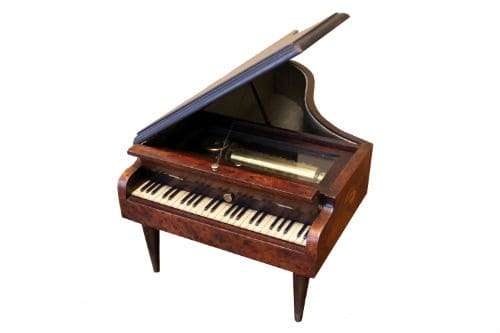
Types of music boxes
Models are usually distinguished by the type of mechanism, design.
By type of mechanism
There are 2 options: with a manual mechanism, with a winding mechanism.
- Manual. The name speaks for itself: the tool works while the owner scrolls the handle. Stopping the action pauses the sound of the melody.
- Clockwork. Assumes the use of a key: until the plant runs out, the melody continues to sound.
By design
The tool is made out in every possible way, stylizing for various things. The most popular, frequently occurring options:
- a chest of drawers with several drawers: the upper one occupies a tool, the lower one is intended for storing valuable gizmos;
- piano, gramophone – a classic gift option that can decorate the interior;
- heart – an ideal gift for lovers, newlyweds;
- swan lake – equipped with dancing figurines of ballerinas.



